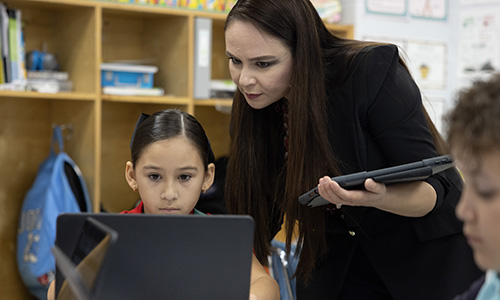Research report
Looking beyond vision: Supports for students who are blind or visually impaired in mathematics
June 2022

Description
This review examines research on math achievement in students who are blind or visually impaired (BVI), and seeks to show the opportunities that BVIs have access to in order to demonstrate their knowledge of mathematics as well as the unique challenges they face and the ways in which these barriers have (or have not) been addressed. Math achievement for students who are BVI often lags that of their peers (Bell & Silverman, 2019; Cryer et al., 2013) though there is substantial evidence that vision is not required for the development of number sense or other math skills and concepts, and that students who are BVI can develop these skills using non-visual pathways (Amalric, 2018; Crollen & Collignon, 2020; Ahlberg & Csocsán (1999). However, few studies have explored math education for BVI students, and the limited research that exists on online math access for BVIs focuses on presentation modalities such as auditory methods, haptic feedback, and tactile input for the purpose of describing visual information (Scalise et al., 2018). Nevertheless, research indicates that given proper academic supports within the school setting (Giesen et al., 2012), and access to multi-representational materials (Scalise et al., 2018) that engage multiple senses (Crollen & Collignon, 2020), many of the barriers that prevent BVIs’ access to mathematical content can be greatly reduced. With an inclusive assessment showing growth over time (Rottmann et al., 2020), and when given opportunities to engage independently (Beal & Rosenblum, 2018), BVIs can demonstrate their mathematical knowledge, perceive their own growth in mathematics, and gain some much-needed confidence in their ability to succeed in technical fields of education.
See MoreTopics: Accessibility, Equity, Math & STEM








